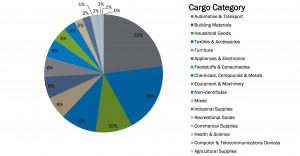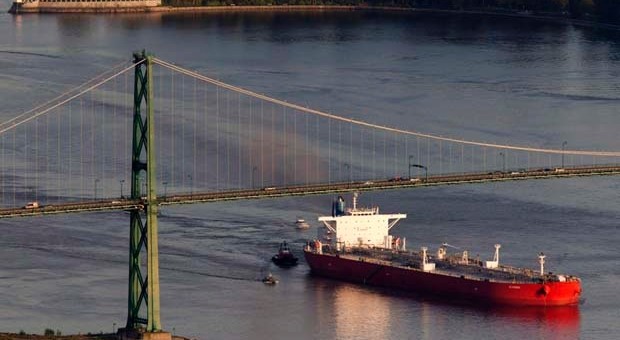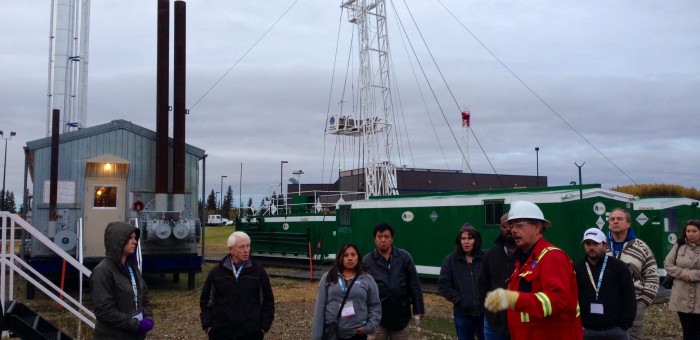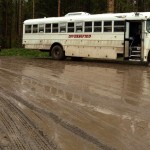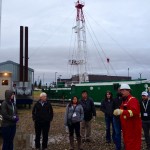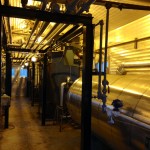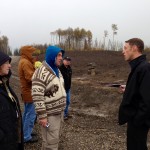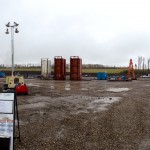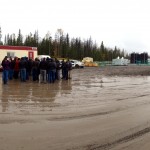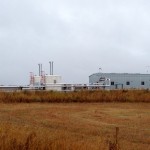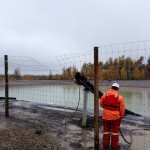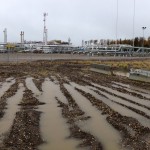Environment
Local Solar Company Wins Award
Media Statement December 16 2013
Local Solar Company Wins Award
For immediate release
Supporting Renewable Energy
Victoria BC – A Victoria based solar technology company has been awarded Canadian Distributor of the Year by the Canadian Solar Industries Association (CanSIA). HES-PV sold over 1000 home and commercial solar systems in 2013, one of over 650 companies in Canada heading towards a goal of generating 3.48 GW, enough energy to power 350 000 homes, by 2018.
“Despite the low electricity prices in Canada, the trend to take control of rising energy costs is made much easier for consumers since solar electric power has become so affordable. The cost of residential solar systems has dropped 40% over the past three years due to the global solar boom, and more Canadians are taking advantage of this technology” Dave Egles, founder HES
While recognizing the success of programs and initiatives like Solar Colwood (www.solarcolwood.ca) in the Capital Regional District, and others around the province and country, the patchwork of incentives at the municipal, provincial and federal level make it difficult for consumers to access clean energy technologies.
The renewable energy sector has enormous potential to reduce energy costs for residences and commercial operations, and to produce quality, well paid, jobs in all regions of British Columbia.
“I am delighted that a constituent Dave Egles and his company HES-PV have received this well-deserved award. I’ve recently toured two of his impressive installations in the riding of Oak Bay Gordon Head. Across British Columbia, clean technology companies have the potential to stimulate BC’s economy through innovation and job creation. This is a sector that deserves much greater support from all levels of government as we transition towards a resilient and sustainable 21st century economy” Andrew Weaver MLA.
About HES-PV – HES-PV is a Victoria based technology company, specializing in solar electric systems for homes and businesses. HES sold over 1000 systems in 2013, with a power production equivalent to the electrical needs of 1000 homes. HES also has facilities in Barrie Ontario, and participates in Ontario’s FIT and MicroFIT programs with large scale solar installations to help Ontario fulfill its commitment to replace its coal fired generation with clean renewable energy. Its’ founder, Dave Egles, started in the solar industry as the first commercial applications were being developed in 1988. He connected the first Net Metered Grid-Connected Solar House in BC that joined BC Hydro’s Net Metering Program. HES has a staff of 25 people.
Contact: Dave Egles degles@hespv.com 250-882-1533.
Mat Wright
Press Secretary: Andrew Weaver MLA
mat.wright@leg.bc.ca
1 250 216 3382
It’s time to say ‘no’ to coal and ‘yes’ to jobs
British Columbia presently mines, transports and ships metallurgical coal used in the steel industry in Asia. These are where B.C. jobs are focused. However, the proposed Port Metro Vancouver, Texada Island and even recent Prince Rupert expansion of coal exports, is largely for thermal coal produced in the United States that is burned to produce electricity. North American markets are drying up for this thermal coal due to an explosion of shale gas production. Shale gas burns much cleaner and more efficiently than coal. Even China recently announced plans to significantly reduce their use of coal.
Washington, Oregon and California have all said no to the export of this excess thermal coal through their ports. So should British Columbia.
This is not about lost B.C. jobs or economic growth. It’s about turning the Best Place on Earth or Beautiful British Columbia into a petro province and the message that this sends internationally.
The premier recently toured Asia touting B.C. natural gas as a means of reducing Asian greenhouse gas emissions arising from the burning of thermal coal. Even in the case of Japan, which is shutting down its nuclear reactors, the premier is arguing that B.C. should earn credits for potential greenhouse gas reductions. She argues that Japan could build coal-fired electricity plants if they don’t switch to natural gas — arguably a bit like me saying “give me a credit or I’ll buy an SUV instead of a hybrid.”
The B.C. government needs to be consistent with its approach to greenhouse gas management. We need to send a strong signal to the market that our principles: that the well-being of future generations of British Columbians are not for sale.
But this isn’t just about saying no to development. We can instead promote real opportunities for the growth of stable, well-paid BC jobs.
The Port of Prince Rupert is the third largest port on the west coast of North America and the closest to Asia. Prince Rupert also benefits from having the lowest-grade passes through the Coast and Rocky mountain ranges. This means that ships can get to Asia three days faster than from any other North American port, and trains can be longer, and burn less diesel, as they transport goods eastward.
The modern Fairview container facility built in 2007 is a highly efficient direct ship-to-train system used for both importing and exporting goods to and from Asia. Most of the exports are wood products, grains, metals, and other resources and most of the imports are manufactured goods (see Figure).
Figure: Prince Rupert cargo category exports (left) and imports (right) by percentage of total. Source: Prince Rupert Harbour Authority.
The potential for job growth at this port is profound. Presently the container facility does not have a capacity for destuffing and restuffing containers upon their arrival from Asia. Let’s suppose a company like Walmart or Costco wants a large order of fridges, stoves, ipods, kettles, shoes and cell phones all manufactured in China. Right now, containers would come into the Port of Prince Rupert; they would be loaded onto a train and shipped to east or to the mid-west US where destuffing/restuffing would occur (in Chicago, for example). There is no reason why the containers couldn’t be destuffed and all of the Walmart or Costco orders restuffed together in their own containers in Prince Rupert instead of in Chicago. Such a process would involve hundreds of jobs and would give North American distributors faster and potentially less costly access to their inventory.
So together let’s say no to coal and yes to jobs.
Pacific Carbon Trust moving to Ministry of Environment a positive step
Media Statement: Pacific Carbon Trust and Carbon Neutral Capital Program
Dr. Andrew Weaver, MLA Oak Bay-Gordon Head
As a part of the BC Government’s Core Review, Minister Bill Bennett made two key announcements today regarding the Pacific Carbon Trust and the Carbon Neutral Capital Program:
- The Pacific Carbon Trust—previously an independent organization—will be transitioned into the Ministry of Environment (MOE) by 2015/2016 at a cost savings of $5.6 million annually.
- The Carbon Neutral Capital Program—a program that supports school districts to fund energy-efficiency projects—will be considered for expansion to include hospitals and post-secondary institutions.
As a former member of Premier Gordon Campbell’s Climate Action Team and current Green Party MLA for Oak Bay-Gordon Head, Dr. Andrew Weaver applauds the government for trying to find cost-effective ways of administering and expanding effective climate action programs.
Pacific Carbon Trust:
“What’s critical about this announcement is that it leaves in place the Carbon Neutral Government legislation which forces the public sector to show leadership in emissions reduction. The Pacific Carbon Trust has been an important tool in British Columbia’s shift to a clean energy future. It is important to find cost-effective ways of administering the offset program and ensuring greater government oversight and accountability of the type of offsets purchased.”
Carbon Neutral Capital Program:
“I support the government’s move to consider expanding the Carbon Neutral Capital Program to include hospitals and post-secondary institutions. In fact, I would go even further and suggest that a process be developed to promote offsets within the public sector such as the conversion of school bus fleets and BC Ferries to run on compressed or liquefied natural gas, respectively”.
While Dr. Weaver is supportive of the government’s announcement today, he remains deeply concerned that BC’s legislated greenhouse gas reduction targets are in jeopardy due to the proposed expansion of fracking in northeastern BC.
Media Contact
Mat Wright – Press Secretary, Andrew Weaver MLA
mat.wright@leg.bc.ca
1 250 216 3382
Open Letter to Premier Christy Clark
“We are woefully under-resourced,” Clark said in a recent interview with Peter Mansbridge on CBC. This in response to both internal and public reports that British Columbia is unable to respond to an oil spill along the coast, and certainly does not have the techniques, equipment or expertise to manage a diluted bitumen (DilBit), or heavy oil, disaster.
Meanwhile, the Premier is actively seeking revenue guarantees for any heavy oil pipeline originating from Alberta, sending a mixed message to industry, developers and communities. On one hand the fact neither provincial or federal resources will be able to handle even a relatively small marine spill would seem to be a line in the sand – no pipelines, no tankers. On the other hand, smiles and handshakes with Alberta Premier Alison Redford with words suggesting the provinces are closer to a revenue agreement.
Before the province continues down a path of dilbit transport, here are four questions that need to be answered.
An Open Letter to Premier Christy Clark
October 9th,2013
Honourable Christy Clark Premier of British Columbia
Parliament Buildings Victoria BC V8V 1X4
Dear Premier Clark:
I applaud the fact that your government has been consistent in requiring five conditions to be met before you will support enhanced heavy oil tanker traffic off our coast. Consistency is important in providing certainty to the public, business and investors alike. It is for this reason that I am writing to you to seek some further clarification on the second and third of your five conditions. As written, these conditions require:
“World-leading marine oil-spill response, prevention and recovery systems for B.C.’s coastline and ocean to manage and mitigate the risks and costs of heavy-oil pipelines and shipments.”
“World-leading practices for land oil spill prevention, response and recovery systems to manage and mitigate the risks and costs of heavy oil pipelines.”
The Department of Fisheries and Oceans has identified that behaviour models specific to diluted bitumen (dilbit) do not exist. In short neither research nor data on the effects of dilbit released into a marine environment is available. In addition, the procedures, protocols, equipment and expertise that will be required to respond to a potential spill do not exist. This suggests that the current standard for a “world-leading” response is, practically speaking, a fairly low standard.
In my view, the Province’s May 31, 2013 thorough and comprehensive submission to the Joint Review Panel (JRP) did an outstanding job representing the interests of British Columbians. The submission specifically stated that the BC Government required an “effective” heavy oil spill response capacity before it could support a proposal. In that report, the government implies that its criteria for an “effective response” includes meeting specific standards for:
1. Removing dissolved oil from the water column;
2. Dealing with sunken oil in a water course;
3. Implementing a precise leak detection threshold;
4. Committing to a specific and realistic response time to any oil spill at any affected geographic location;
5. Ensuring accessibility of the pipeline year-round to respond to any spill, regardless of seasonal conditions.
In order to provide further clarity to the public, business and investors I have four further questions:
1) Could you please provide a detailed outline of the specific standards and criteria your government uses to evaluate the effectiveness of a proposal’s heavy oil spill response capacity?
2) In your interview with Peter Mansbridge that aired on October 5, 2013, you stated that British Columbia is “woefully under-resourced” to deal with a heavy oil spill. You also acknowledged that BC is already at risk of a heavy oil spill, since tankers leave Burnaby harbour every week transporting dilbit from the Kinder Morgan Trans Mountain pipeline. As I am sure you are aware, the product transported in the Trans Mountain pipeline has changed since it was initially constructed in 1963 and dilbit is a relatively new addition. Given the numerous concerns that you and your government have raised about our current heavy oil spill response capacity, will the proposals to expand the Trans Mountain pipeline or transport heavy oil by rail be subjected to the same specific criteria of “effectiveness” that you have laid out for the Northern Gateway proposal?
3) In this same interview you made it clear that you expect the federal government to provide more resources for marine spill response “before any more heavy oil comes off the coast”. However, the Province’s submission to the JRP clearly states that an effective spill response will “be impossible or severely constrained” in certain regions, regardless of available resources. How, realistically, will further Federal resources address the fact that effective spill response may not even be possible in certain instances?
4) In regards to the heavy oil that is already being transported out of Burnaby harbour as well as any additional heavy oil that is to be transported to the BC coast, would you not agree that it would make far more sense to refine that heavy oil in its entirety in British Columbia prior to shipping it offshore both to mitigate against the risk of a marine dilbit spill and to provide jobs and an economic stimulus to British Columbia?
I thank you in advance for your consideration of these four questions and I very much look forward to your response.
Yours sincerely
Andrew Weaver
.
Touring the Natural Gas Fields in Fort St. John
This week Andrew Weaver is in Fort St. John for the BC Energy Conference. The conference brings together industry leaders, government representatives, and academics to generate awareness and general literacy relating to the energy sector in Canada, and particularly relating to the natural gas sector which is prominent in this region.
Andrew Weaver has raised serious concerns about the government’s plan to develop a liquefied natural gas sector in British Columbia. This conference serves as another helpful step in ensuring that he can continue to offer an informed and constructive voice to the debate.
The first day of the conference was spent touring some of the nearby natural gas facilities. Below are a few of the highlights.
- The Peace River valley
- The buses that transported us between sites
- Touring a training site at Northern Lights College
- Inside the training site at Northern Lights College
- Questions on the tour
- A drilling site
- Learning about hydraulic fracturing
- A site undergoing hydraulic fracturing
- A natural gas rig
- Touring the camp
- A water storage site
- A close up of the water storage site
- A gas plant that ties into a transmission line
- The Peace River valley




